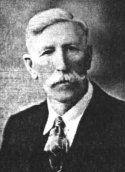On December 1, 1918, Iceland gained its independence after centuries of colonial rule since the late 13th century, first by Norway and then by Denmark. Growing pressure for independence from Danish rule in the 19th century led to the re-establishment of the Alţingi (parliament) in 1845, free trade in 1855, a constitution in 1874, and Home Rule, with a resident Minister for Iceland in 1904.

|
The Indipendence Day 1918
|
|
In 1915 Iceland received its own flag which could be used domestically, and in 1918 Icelandic and Danish negotiators produced a parliamentary bill which began with the words: "Denmark and Iceland are free and autonomous nations, united under the same King." The Icelandic Alţingi and the Danish Parliament both passed the Act, which was confirmed by a referendum on October 19.
Independence came at a time when Iceland had been dealt a series of heavy blows by nature: the previous winter had been an unusually harsh one, and during the preceding months
Mt. Katla

|
Handcolored Postcard showing
the Mt. Katla eruption in 1918
|
|
had erupted with dire results. In addition, an influenza epi- demic (known in Iceland as "the Spanish disease") was raging. Hence the occasion was marked only by a modest ceremony at Government House in Reykjavík on December 1. Iceland was de- clared an independent nation, and the Icelandic flag was raised.
December 1 became Ice- land's National Day, to be superseded by June 17 after the foundation of the republic in 1944. Strangely enough, both December 1 and June 17 are the feasts of the Anglo-Saxon St. Botolph.
December 1 was not widely celebrated in the first years after independence, but the new red, white and blue flag of Iceland was raised that day, which was also a school holiday. On December 1, 1921, the Icelandic Order of the Falcon was established and in the 1920s and 30s, December 1 was the usual occasion for awarding these decorations.
Social gatherings of various kinds were held on December 1, often in schools, and in 1921, students of the University of Iceland adopted December 1 as their own event.
 |
The Order of the Falcon |
In 1922, the students celebrated December 1 as National Day, and also launched a fund-raising campaign for a Students' Residence. They produced a hefty book for donations, bound in sealskin, which they called Íslendingabók, the Book of Icelanders, although it came to be known as Selskinna, Sealskin. This book was placed in a prominent position on December 1 each year, for people to sign and pledge donations for the Students' Residence.
Events on Independence Day are organized by the students' union, or by a specially organised committee of students. Marches and meetings were a feature of the day from the start. Ten years after independence, the students first invited an outside speaker to address their meeting, and this tradition has been maintained ever since. The students have listened to speeches from politicians, professors, writers and union leaders.
In 1944, when Iceland broke away from the Danish crown to establish the modern republic, June 17 became National Day but the students opted to maintain their own Independence Day celebration on December 1. Since 1944 December 1 has been an official flag day.
Ref. Árni Björnsson: "High Days and Holidays in Iceland"




 There's always something interesting in them. I thought you and the readers might enjoy seeing a photo of Sigurjona Johannsdottir Bergmann and her first child, born in Dakota Territory. The photo was taken in Dakota before 1890. Sigurjona lived to a ripe old age
and became the mother, grandmother, and great-grandmother of many.
There's always something interesting in them. I thought you and the readers might enjoy seeing a photo of Sigurjona Johannsdottir Bergmann and her first child, born in Dakota Territory. The photo was taken in Dakota before 1890. Sigurjona lived to a ripe old age
and became the mother, grandmother, and great-grandmother of many. and social connections between Icelanders and people of Icelandic origin in North America.
and social connections between Icelanders and people of Icelandic origin in North America.


